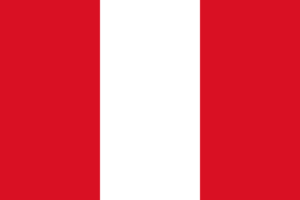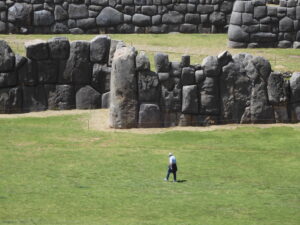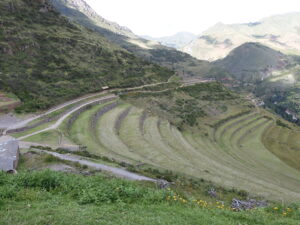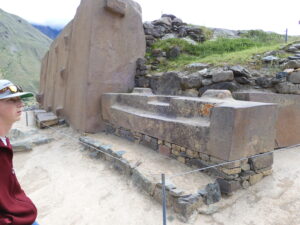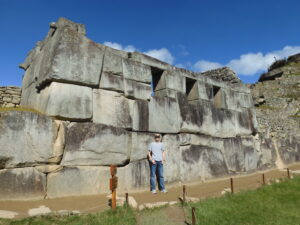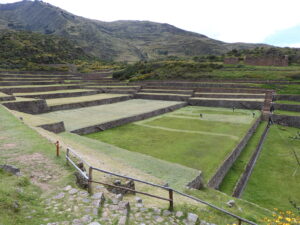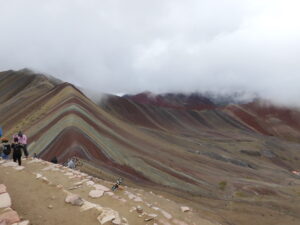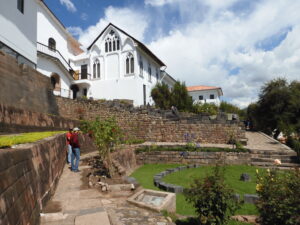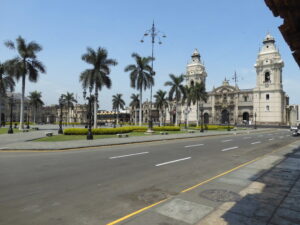Peru Food & Drink
Fueling the Journey
Food
Peru is widely ballyhooed as a foodie destination. I love to eat and try new foods, but I am not a foodie or connoisseur. I ate a lot of good food in Peru, and a few things that seemed over-hyped. I don’t know that it was the “worth the food alone” destination others have made it out to be, but as with most places, you’ll find a lot of good and interesting things to eat there. I approached food and drink in Peru in a very regimented, nerdy way. I made a list of things I wanted to try and crossed them off as I encountered them. Here is a brief description of my findings.
1. Ceviche: raw sliced or diced fish prepared in citrus with cilantro. I have had ceviche before, and I love it. In other places, it was often served almost like a salsa with chips or fried plantains you could scoop it with. In Peru it was often served as a stand alone plate with slices of fish you could eat with a fork. I expected ceviche in the coastal city of Lima, but was surprised to find it served abundantly in Cusco until I learned that the ceviche in the Andes is made with trucha (trout).
2. Lomo Saltado: stir fried beef (or alpaca). This seemed hard to mess up. It was good everywhere we tried it. It became the safe order for my boys who tend to be less adventurous eaters than I am.
3. Aji de Gallina: described as a spicy, creamy chicken stew served over rice. I only tried this once. Mine was rather more bland than I expected. This may either be an aspect of its comfort food status, or the result of me ordering it at a tourist oriented restaurant.
4. Papas a la Huancaina: potatoes in spicy cheese sauce. This sounded delicious. I ordered it more than once, and it never came with much spice in it.
5. Cuy: guinea pig. This one took the most courage to try. Many restaurants serve this in a way so that it looks like a rat cooked up as a full roasted pig – except they can never find an apple small enough to put in its mouth. Occasionally, you can find it in other, less rat-like forms that resemble chicken strips, etc. Andrew and I got the nerve to try this on our last day in Lima. It was not the “full rat” presentation. It tasted kind of like dryish chicken.
6. Causa: a rich potato casserole. This was just as delicious as it sounds.
7. Rocoto Relleno: stuffed spicy peppers. The presentation and content varied greatly on these dishes, usually served as appetizers. They were always very good. They are not atomic mouth bombs like Thai food, but they have enough spice and flavor so you know it isn’t a British dish.
8. Anticuchos de Corazon: grilled heart. I ordered this twice, and it came on a stick like a kebab with onions and peppers. The meat was slightly tough, but the flavor was excellent.
9. Arroz con Pato: literally rice with duck. My duck was served in a cream sauce. I like duck anyway, but this was excellent served on rice. It was harder to find than many of the other dishes on my list.
10. Pollo a la Brasa: roasted chicken. About what you would expect from the description.
Bonus items that weren’t on the list:
Empanadas: hand held meat pies. These are more of an Argentine specialty, but street vendors all over Peru have them. The meat pies are delicious and portable. Every cheese empanada I tried was dry.
Ice Cream: Every ice cream vendor I tried had delicious artisan quality ice cream. I enjoyed trying the flavors based on local fruits.
Alpaca: Many restaurants in the highlands served some form of Alpaca. I bought a sort of stew from a vendor on Vinicunca. Since much of the steak served in Peru was of lower quality, the alpaca was often more tender. Andrew ordered it several times, especially in the lomo saltado.
Chocolate: I always enjoy trying the commercial candies in places I visit. Peru did not disappoint.
Beverages
I feel I should post a disclaimer any time I offer an analysis of beverages. Although I am not morally opposed to consumption of alcohol unless it leads to drunkenness, I drink very little. Don’t get me wrong, I can put down cart loads of water and Pepsi Max. I just don’t drink much alcohol. I do not have a developed wine palate, and I do not care for most harsh hard liquors. I do not hate beer, but it is not my favorite either. In other words, if it doesn’t taste like punch or a slushy, I probably won’t like it. Take my observations with that salt added to the rim.
1. Pisco sour: Peru’s national drink, with its own holiday. It’s made by mixing pisco (a type of brandy made from fermented grape juice), lime juice, egg whites and sugar. I tried a couple, just to make sure my displeasure wasn’t the result of the maker instead of the beverage. I found them to be quite bitter.
2. Chilcano: Chilcano is another distinctly Peruvian cocktail made from pisco. It a Pisco Sour with ginger ale instead of the egg whites and sugar. I just didn’t like anything made with pisco.
3. Mate de coca: herbal tea made from enough coca plant leaves that itmight cause a positive drug test. It is supposed to taste like green tea and have a mild stimulating effect similar to coffee. It is repeatedly hailed as a cure for altitude sickness. Since I never suffered from this, I didn’t search it out.
4. Lucuma milkshake: Lúcuma is a native fruit in peru that looks like a cross between a mango, a pear and an avocado. The flesh has a sweet flavor sort of like a fruity caramel. Since the meat of the fruit is dry, it is often used in deserts and slushes in Peru. This made for deliciously different milkshakes and ice cream.
5. Inca Kola: hyper-sweet bubblegum soda. It appears to be the most popular beverage in the country, sold in every shop nation wide. I have heard that Inca gods place some kind of curse on anyone who criticizes it. I can honestly say it is… OK for being hyper-sweet bubblegum soda.
6. Chicha morada: made from boiled purple corn, pineapple skin, cinnamon, clove and sugar. This was the best surprise drink of the trip for me. It is a sort of fruit based punch. It was tasty when served fresh, but quite disappointing when I bought a bottle from a store. I ordered it often with my breakfast.
7. Emoliente: an herbal tea is made with plantain leaf, alfalfa sprouts, barley, dried horsetail and flax seed. This is supposed to help pep you back up if you feel under the weather. You get it from street vendors. It took me a while to find some, and I tried it even though I wasn’t sick. It was just OK. It was served from a repurposed plastic milk carton, and I suspect the concoction varies significantly depending on where and when it is purchased.
8. Jugo especial: thick beverage made by blending a variety of fruits, a rich Peruvian syrup called algarrobina, dark Cusquena beer, and a raw egg. This is another street vendor specialty that likely varies depending on where you find it. I found it at the outdoor market in JFK park on our last night in Lima. A vendor in a back corner of the market was constantly working over this weird frothy brew with something like a whisk that was about as big as a broom. The boys demurred, but I tried some, and it was a lot better than I thought it would be.
9. Chicha de jora: similar to chica morada, except it’s made with yellow corn and is alcoholic. It is made by germinating corn, removing the sugars, boiling the wort and leaving it to ferment in barrels. I was told it was supposed to taste like apple cider, which I love. It did not taste like apple cider, chicha morada or anything else good.
10. Leche de Tigre: made using the leftover juice from a plate of ceviche – fish juice, lime juice, chilis, sliced onions and coriander. I only found this on a few restaurant menus, and tried it. It tasted like ceviche and thus was also very tasty.

